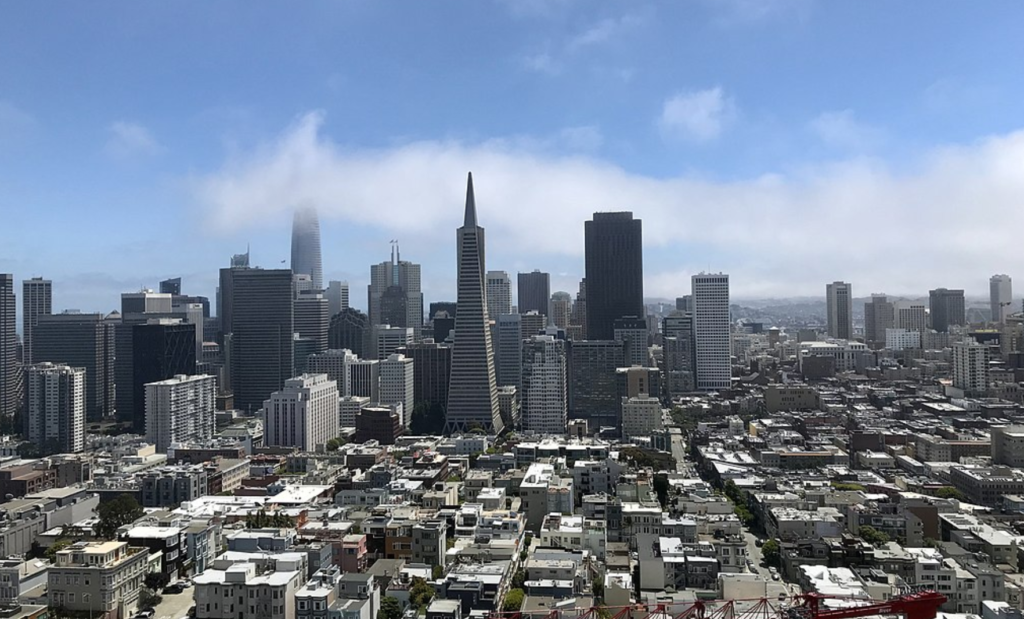I almost gagged on my Bud Light this weekend when I read the Chronicle’s editorial on the future of the city and downtown.
It’s stunning how the paper refuses to take any responsibility for its critical role in creating the problem that it now wants to solve.

Check this out:
The tragedy of 9/11 inadvertently revealed the glaring vulnerabilities and inadequacies of office-dependent, 9-to-5 business districts — and created a new model for making American downtowns more stable economic engines for local governments and fostering better, more compelling urban life.
Unfortunately, San Francisco didn’t get the memo.
Um, excuse me: Lots of us in San Francisco got that memo, many years before 9/11, and argued that putting the city’s economic future entirely on the finance, insurance, real estate, Pacific Rim trade and tech in downtown offices was a terrible mistake.
And the Chron, for the 40 years that I have been in San Francisco, utterly opposed us, dismissed us, and supported politicians who were all in on downtown office development, tax breaks for tech companies, and a vision of the city that did not include any sort of economic diversity.
I’m sorry, but this has been one of my major journalistic beats since I started working at the Bay Guardian in 1982. We fought to protect industrial space in Soma. We fought to protect small businesses downtown. We said, over and over again, that a monocrop economy would face the danger of total collapse.
The Chron was always, always, on the other side.
Reality: A lot of us got the memo. Some of us wrote the memo. But the Chron didn’t read it.
During the office boom years of the 1970s and 1980s, and into the 1990s, the progressives pushed for more housing, creating, among other things, the Office Affordable Housing Production Program, which sought to link new offices to some level of new housing.
The Chron, and the politicians it supported, were on the other side, insisting, as then-Mayor Dianne Feinstein said, that downtown offices were the goose that laid the golden eggs. As John Elberling recalls:
Downtown-centered corporate growth and real estate development had been the core economic strategy of San Francisco’s civic elite ever since the end of World War II, requiring new mass transit capacity costing billions of dollars to move hundreds of thousands of commuters in and out of Downtown every day – BART, Muni/Metro, and someday a Transbay Caltrain terminal. I was supposed to understand, of course, that the trickle-down economic benefits of Downtown would keep San Francisco a prosperous and wonderful place to live for all.
But instead, the great new wealth creation that Downtown represented went to the benefit of those at the top of the city economy, not the rest of the city and its people.
The Chron loved Feinstein. The paper opposed all efforts at limiting downtown offices, and opposed candidates for office who supporting those limits, which might have saved a lot of blue-collar jobs, particularly in Soma.
Now the paper wants more arts and entertainment downtown. Great idea—but it won’t happen as long as the landlords are demanding the same rents they were getting during the tech boom years.
The primary thing an arts district needs is not zoning; it’s cheap rent. The people who might populate that district don’t care about incentives for developers to retrofit offices as housing; they care about affordable space.
That’s going to mean some big changes, including some losses for the developers and landlords and perhaps some city subsidies not to the property owners but to the artists.
It might make sense, for example, for the city to buy a bunch of office buildings, at a deep discount, and turn them over to nonprofits, to take them out of the private market.
Let’s see what the Chron thinks about that.




